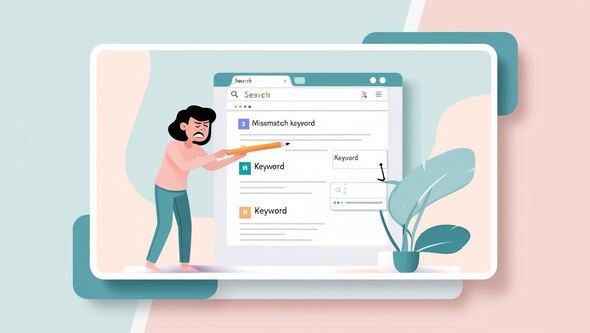Table of Contents
📈 Step 1: Check Your Impressions in Google Search Console
🔑 Step 2: Track New Keywords You’re Ranking For
🧭 Step 3: Review Engagement in Google Analytics 4
🕰️ Step 4: Understand SEO Timelines
🚀 Bonus Tip: Focus on Direction, Not Perfection
✅ Quick SEO Progress Checklist
You’re putting in the work — publishing blog posts, building links, updating your site — but you still wonder: Is it paying off? Here’s how to know without fancy tools or expensive subscriptions.
If you’re not seeing dramatic traffic spikes overnight, don’t worry — that’s normal.
When you can’t tell if your SEO is working, you waste time, guess wrong, and miss growth opportunities. Good SEO growth often starts quietly — and you don’t need expensive tools to spot the signs. You just need to know what to look for.
In this guide, we’ll walk you through how to check if your SEO is making progress using free, simple methods like Google Search Console and Google Analytics 4 (GA4).
Complex tools and confusing metrics make SEO feel like a mystery. You shouldn't need a degree in analytics to know if your marketing is working. You just need the right signs — made simple.
📈 Step 1: Check Your Impressions in Google Search Console
Impressions = how many times your website appeared in search results, even if no one clicked.
Look for:
- A steady rise in total impressions over weeks or months
- New queries you’re appearing for
💡 Tip: Even if clicks are low, increasing impressions means Google is noticing your content — that’s the first win.
Why it matters: Rising impressions mean Google is recognizing your site’s value, even before clicks start.
🔑 Step 2: Track New Keywords You’re Ranking For
In Google Search Console, open the “Performance” report and view the list of queries.
Signs of progress:
- Your site is ranking for a broader set of keywords
- Some keywords are moving from page 5–6 toward page 2–3
📊 Small gains often come before big wins. Be patient — SEO is a momentum game.
Why it matters: New keyword rankings show your content is gaining credibility in Google’s eyes, paving the way for bigger traffic boosts.
🧭 Step 3: Review Engagement in Google Analytics 4
Traffic alone doesn’t mean much — you want visitors to stay and interact.
Check metrics like:
- Bounce rate (lower is better)
- Average engagement time (higher shows interest)
- Pages per session (more pages = more value)
✅ Improvements in these numbers suggest you’re attracting more relevant, engaged traffic.
Why it matters: Engaged visitors are more likely to trust, subscribe, and buy — not just bounce away.
🕰️ Step 4: Understand SEO Timelines
SEO results rarely show up instantly.
Typical timelines:
- 1–3 months: Google starts indexing your content and testing it against search queries.
- 3–6 months: Early rankings and impressions grow steadily.
- 6–12 months: Stronger keyword positions and meaningful traffic gains.
📅 SEO is like planting a garden, not flipping a light switch.
Why it matters: Understanding the timeline helps you stay motivated and avoid abandoning good strategies too early.
🚀 Bonus Tip: Focus on Direction, Not Perfection
If impressions, new queries, and engagement metrics are trending up — even slowly — your SEO is working.
It’s better to have consistent small wins than chase instant but unsustainable spikes.
Picture this: You open your dashboard and see steady growth — new keywords, rising clicks, and a clear path forward. That's the power of knowing your SEO is working.
✅ Quick SEO Progress Checklist
- ✅ Total impressions trending upward
- ✅ New keywords appearing in Search Console
- ✅ Lower bounce rates and higher engagement times
- ✅ Keyword rankings slowly improving
- ✅ Month-over-month positive movement, even if small
❓ Frequently Asked Questions
Q: How long does SEO take to show results?
A: It typically takes 3–6 months to see early gains and 6–12 months for significant organic traffic growth.
Q: Should I be worried if my impressions are growing but clicks are not?
A: Not at first. Growing impressions show your site is gaining visibility. Clicks will improve as your content becomes better matched to user intent.
Q: What’s a healthy bounce rate for SEO traffic?
A: A bounce rate between 40–60% is considered normal. Lower bounce rates suggest more engaged visitors.
Q: Do I need paid SEO tools to track my SEO performance?
A: No. Google Search Console and Google Analytics 4 provide all the core insights you need to track your progress.
Q: What if I don't see any improvement after 6 months?
A: If there’s no movement after 6 months, it might be time to audit your content, backlinks, and technical SEO setup.
💬 Final Thought: Trust the Small Wins
You deserve to spend less time worrying and more time growing. With clear SEO signals, you’ll know you’re on the right track — and you won’t be guessing anymore.
SEO progress is real even if it feels slow. The key is to measure the right indicators and trust the gradual upward movement.
Imagine logging into your dashboard and seeing steady growth: more keywords, better engagement, and rising impressions. Keep nurturing your content, updating based on insights, and improving small things consistently — that’s how long-term SEO success is built.
💡 Pro Tip
goalskeeper.io simplifies SEO tracking by pulling your impressions, keywords, and engagement metrics together — so you can see your growth clearly without fancy dashboards.
👉 Start seeing your SEO wins — try goalskeeper.io free for 14 days
Read to next step?
Achieve Digital Marketing Success
Effortless Digital Marketing Analytics with goalskeeper.io
Start Free Trial





